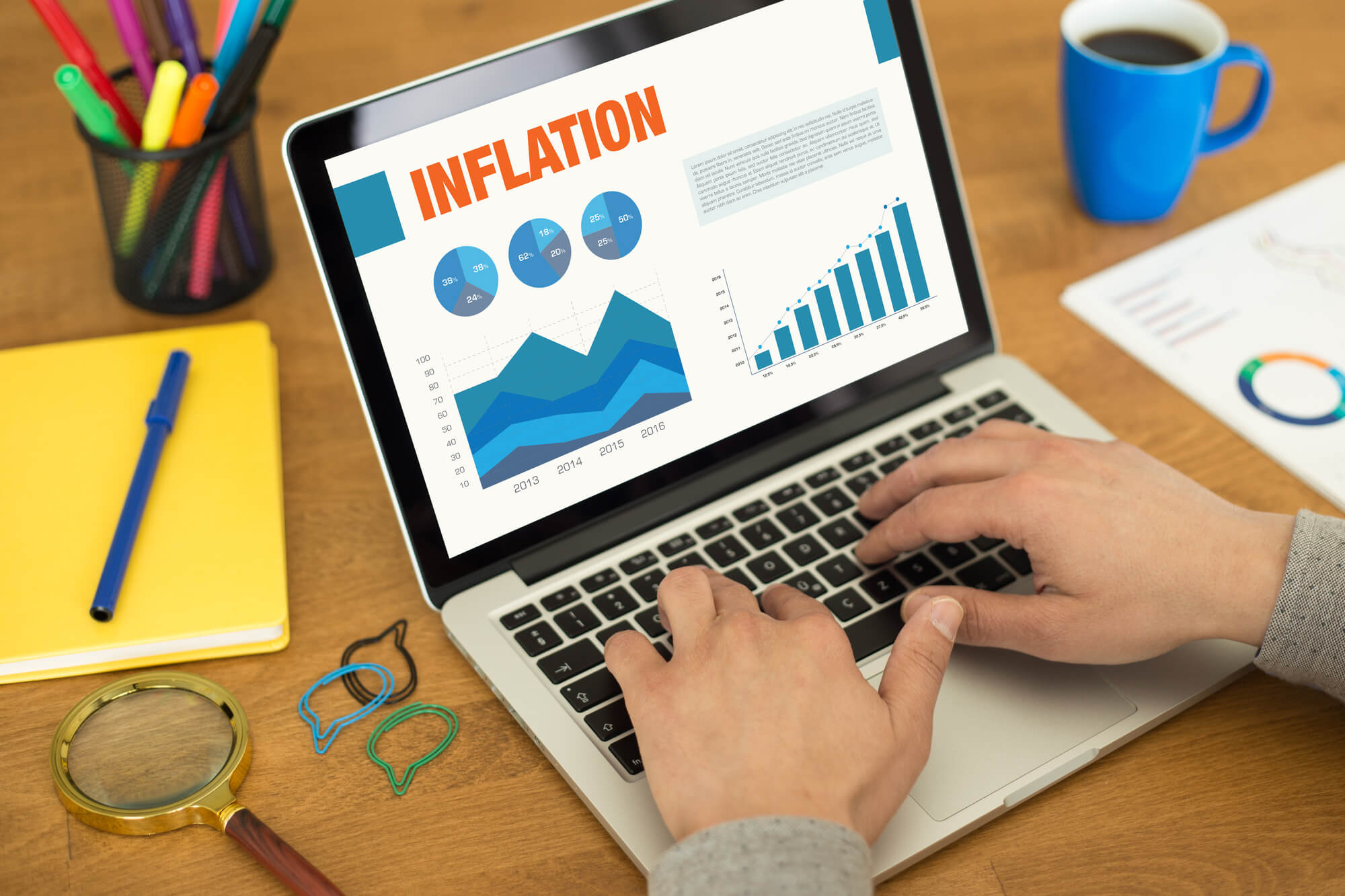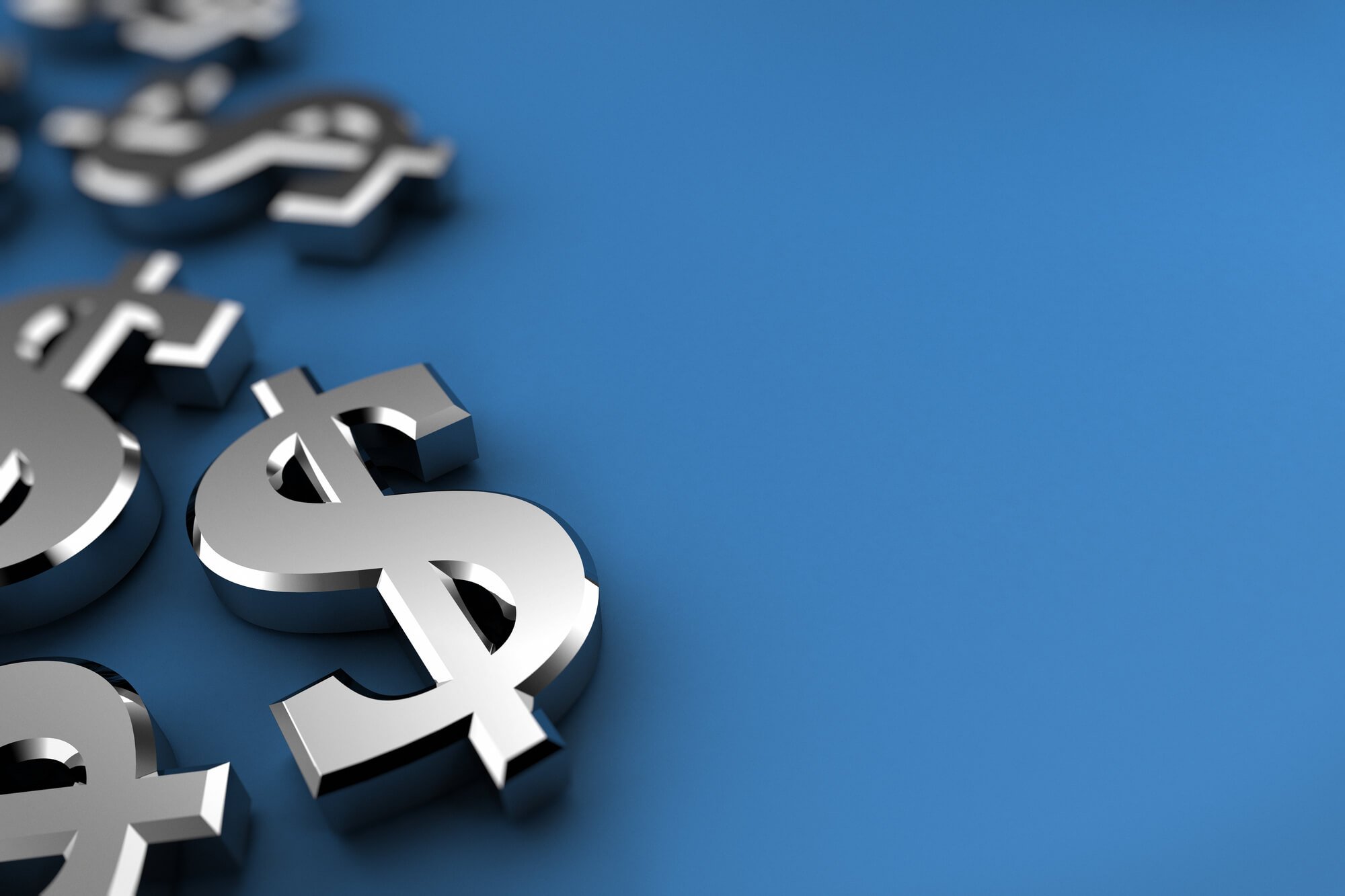While inflation may not always be desirable, it is a regular part of the economic cycle. But for business owners and consumers alike, even perfectly anticipated inflation imposes costs. Why? How does inflation affect businesses even when it is expected?
To answer this question, you’ll need to understand the nature of inflation more fully, as well as its impact on consumer and business costs.
 What Is the Ideal Rate of Inflation?
What Is the Ideal Rate of Inflation?
According to the Federal Reserve, a normal rate of inflation is around 2%. Higher levels can destabilize the economy and result in wage depreciation, a decline in consumer spending, and a contraction of business development.
But what exactly is inflation?
The term “inflation” refers to a general rise in the cost of goods and services. The Consumer Price Index (CPI) and the Personal Consumption Expenditures (PCE) price index are the two most common measures of inflation. These indexes express inflation as a percentage that represents the rate at which costs have increased.
Most consumers experience the effects of inflation every time they buy groceries or gas. But inflation impacts more than just consumer goods; it also impacts businesses and corporations. As the cost of inventory and supplies increases, business owners must adjust their prices to maintain operational viability and profitability.
Why Does Inflation Raise Costs?
Inflation is always a part of the U.S. economic cycle. But even perfectly anticipated inflation imposes costs. Why?
Inflation and the U.S. Dollar
As inflation increases, the value of the U.S. dollar decreases. Inflation reduces the dollar’s spending power. That means it takes more money to purchase the same item. How much more depends on the rate of inflation.
You can see this in action by using the U.S. inflation calculator. For example, an item that cost $1.00 in 1922 would now cost $17.72. An item purchased for $1.00 just a few years ago in 2017 would today cost $1.21.
Over time, the dollar’s value fades. This means that the cost of consumer goods, supplies, and other items will always increase to some degree in order to match the rate of inflation.
The Menu Costs of Inflation
Rising costs lead to rising prices. This effect is what’s known as the menu costs of inflation. Menu costs refer to the prices that a business offers its consumers. They can change due to a small variety of factors, but one of the most common drivers of menu cost change is the rate of inflation.
As inflation increases, businesses will be forced to pay higher and higher prices to cover their overhead costs. Business owners will pay more for things like inventory, marketing, and commercial real estate. To keep up with inflation, these companies will have to increase menu costs accordingly.
At the same time, not all consumer costs will react the same way. Economists commonly refer to certain prices as being sticky, which means that they maintain a certain degree of stability.
Food prices, for example, will rise with inflation, but they don’t undergo the kind of rapid, significant swings seen in other consumer goods. That makes consumer staples a relatively sticky commodity.
What Are Three Costs of Inflation that Economists Focus On?
Businesses experience the costs of inflation in distinctive ways. These costs can be broken down into three broad categories. What are three costs of inflation that economists focus on?
1. Institutional Costs
Institutional costs are the costs needed to maintain a business entity. Specific expenses vary by industry, but they might include business insurance, licensing, inventory, supplies, and payroll.
As inflation rises, so do these institutional costs. Businesses must pay more to maintain their basic operations and often raise the price of their products and services to keep up.
For instance, payroll is a major institutional cost. As inflation rises, America’s workforce will feel the strain that comes from trying to stretch their paychecks. Companies will have to increase compensation packages to attract and maintain star talent, which will take a bite out of their institutional costs.
2. Distributional Costs
Distributional costs refer to the cost of delivering goods and services to the consumer. They include the cost of production as well as costs associated with the supply chain network.
Again, inflation raises the prices of raw materials, fuel, and other essentials. This increase in prices raises the cost of production. It also becomes more expensive to ship items to stores and consumers.
Thus, distributional cost increases can result in higher consumer prices. But when inflation is kept in check, companies can use these price changes to strike a balance between supply and demand to maintain steady growth.
3. Informational Costs
Informational costs relate to the data and digital infrastructure that companies use to survive and grow. Many of these costs are related to third-party software providers, which have their own business costs to contend with.
Inflation forces these third-party providers to raise their rates, which in turn increases the costs of businesses that use these services.
Even companies with internal auditors and financial controllers must contend with payroll issues and the cost of maintaining their software. In this way, informational costs overlap with institutional costs, especially for organizations that rely on human expertise to analyze and interpret business data.

Inflation and the Cost of Living
Businesses aren’t alone in facing the costs of inflation. Consumers likewise experience the impact, even when inflation is kept in check.
Cost of Consumer Goods
Some measurements of inflation — such as the Consumer Price Index — use the average price of consumer goods to calculate inflation.
As the dollar’s spending power diminishes, the cost of these goods rises. Ordinarily, the cost of gas and household goods keeps pace with American wages. But it’s during periods of runaway inflation that consumers feel the biggest sting.
Wage Depreciation
The American workforce hopes to see consistent wage growth. However, inflation weakens a worker’s purchasing power. When inflation is well managed, companies can offer cost-of-living raises that match the rate of inflation. When inflation rates outpace rates of wage increase, workers can see their wages depreciate.
Inflation and the Housing Market
Housing prices are similar to the operating costs of a business in that inflation can increase the cost of building materials as well as labor. Inflation will, therefore, always lead to an increase in housing prices.
It can also impact interest rates. Why? Lenders have to increase interest rates in order to recoup the loss that will occur over time. Inflation means that a $200,000 loan will be worth measurably less in 30 years, which is why lenders adjust mortgage rates to mitigate their losses.
Is Inflation Good for the Economy?
Many economists believe that inflation is good for the economy as long as the rate hovers around 2%.
Why is inflation good for the economy? A steady rate of inflation can help balance supply and demand, which helps with employment rates and job stability.
For consumers, inflation can promote wise decisions when it comes to investing, saving, borrowing money, or making major purchases.

Stay Ahead of the Culture
Naturally, many consumers are concerned about unprecedented inflation rates. It is important to stay ahead of these economic trends if you want to manage your money well and make sound investments.
Gorilla Trades helps investors do just that with an extensive library of tools and resources. Sign up today for a free trial and receive 30 days of stock alerts delivered to your inbox.




